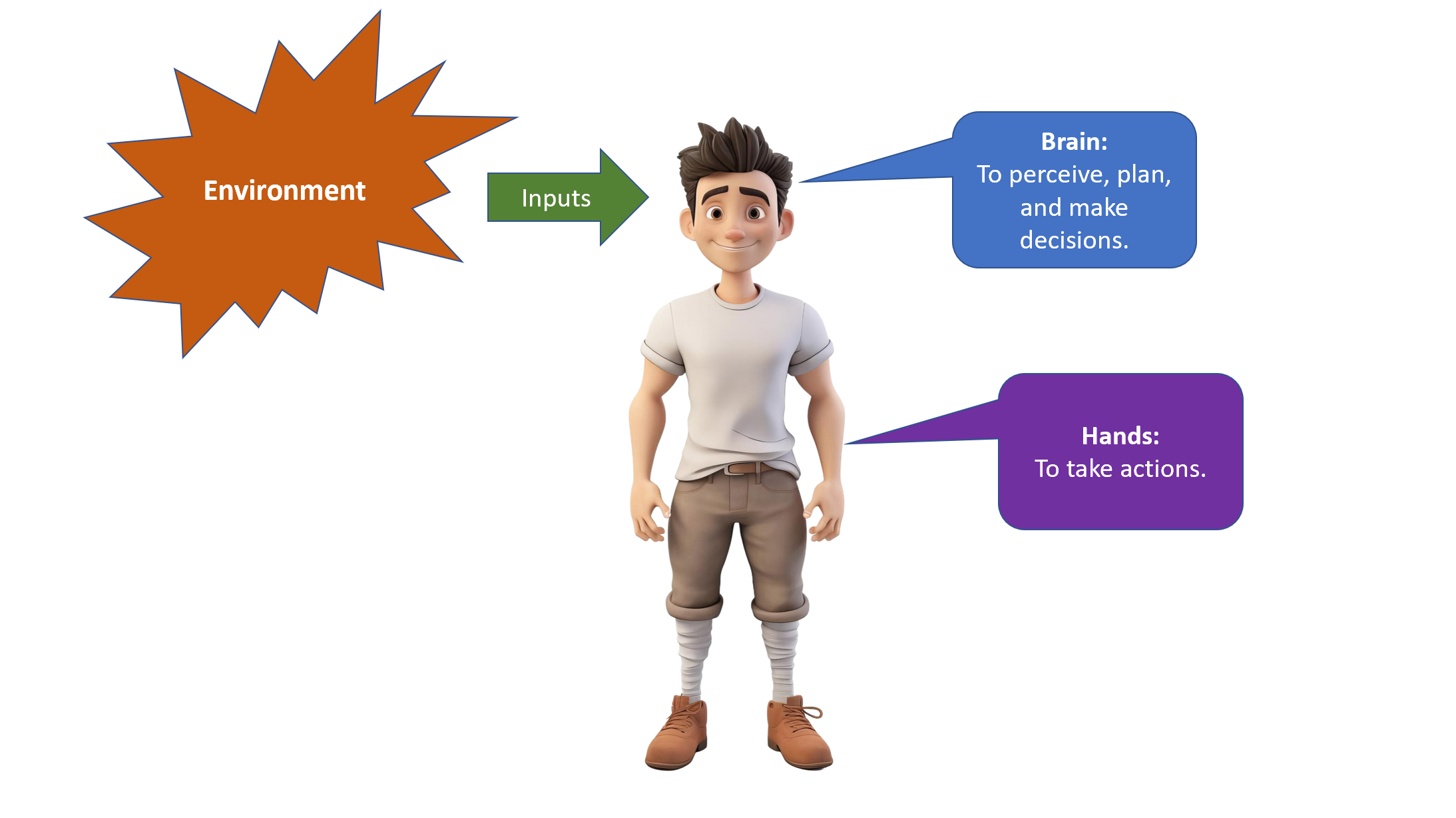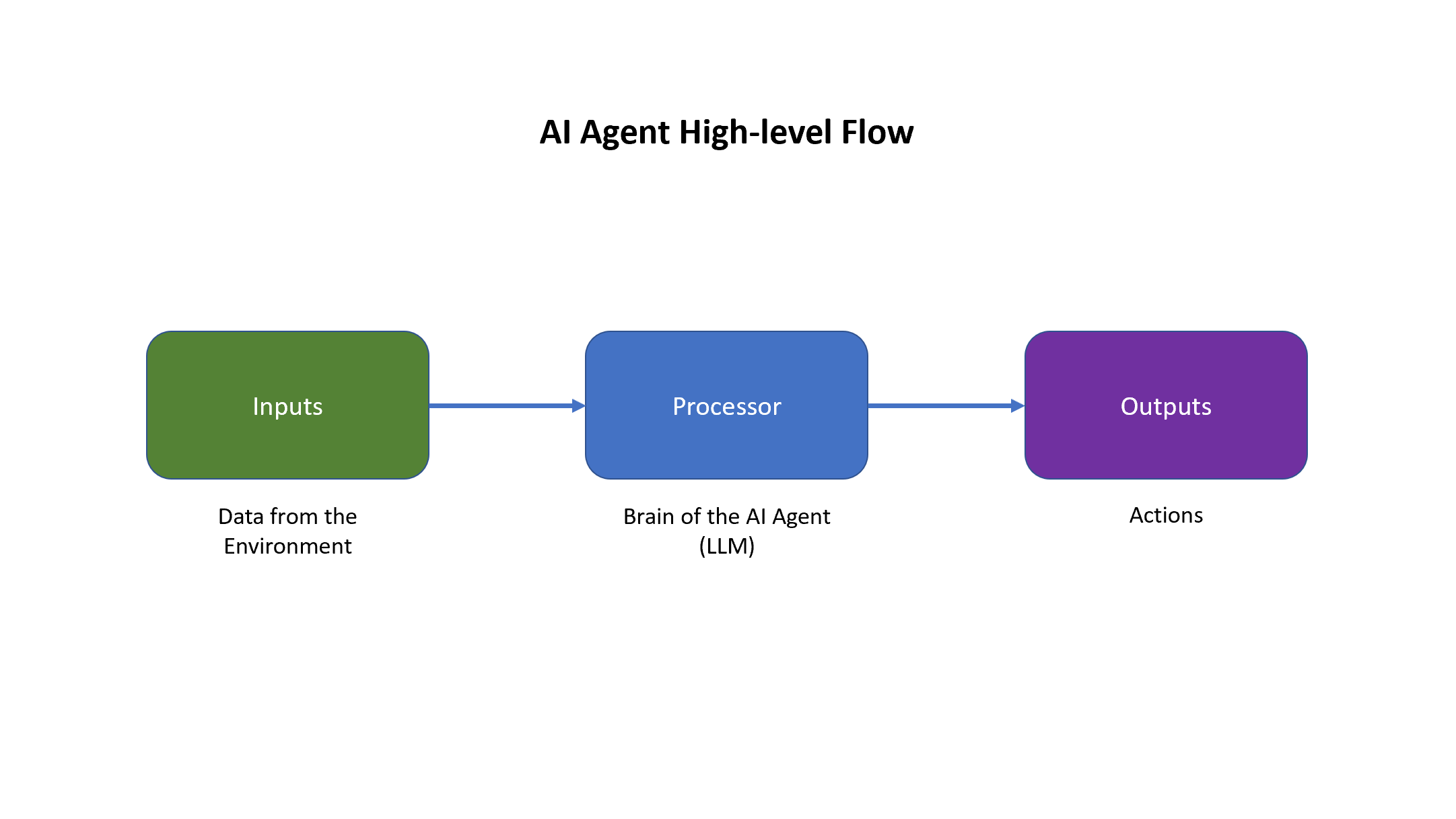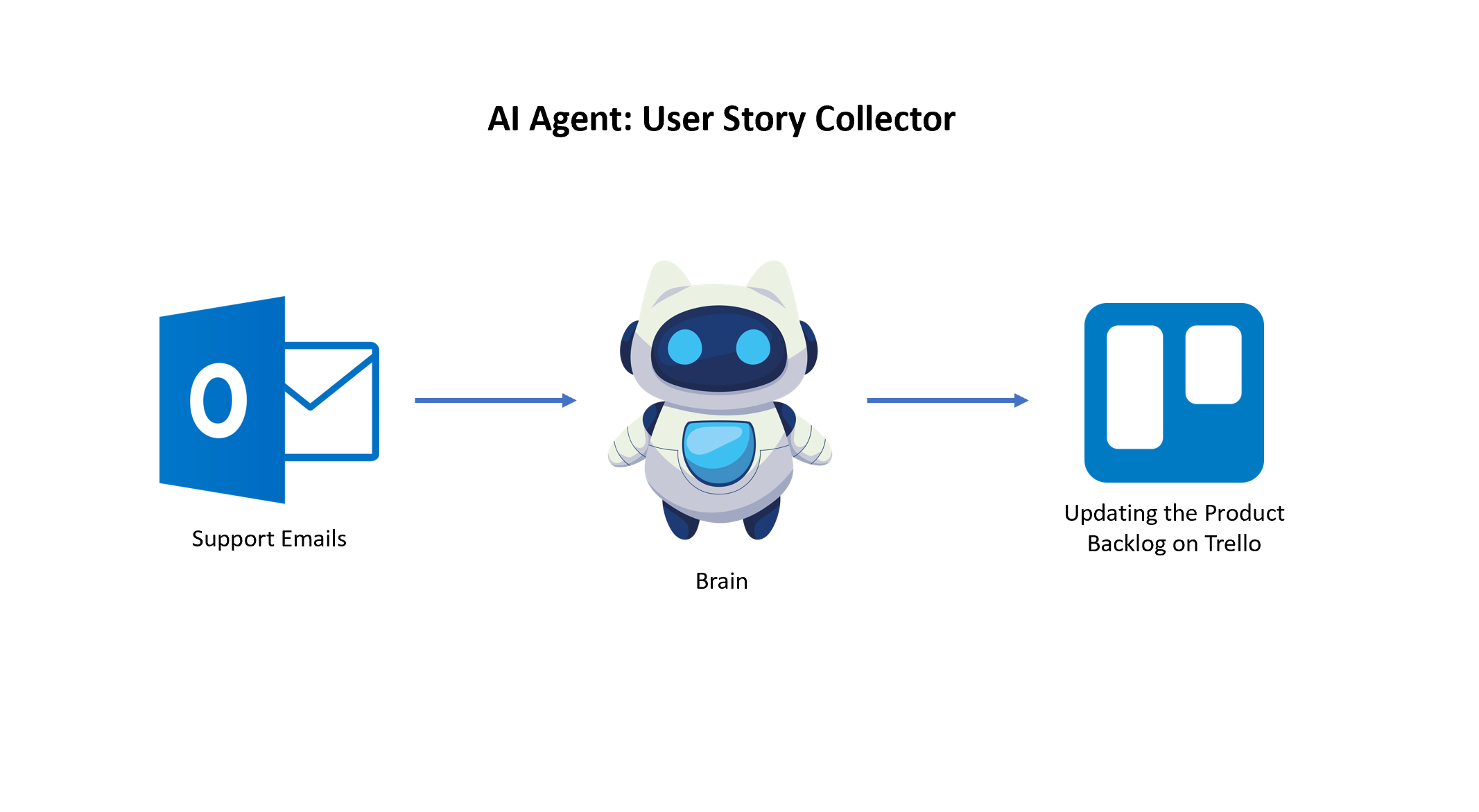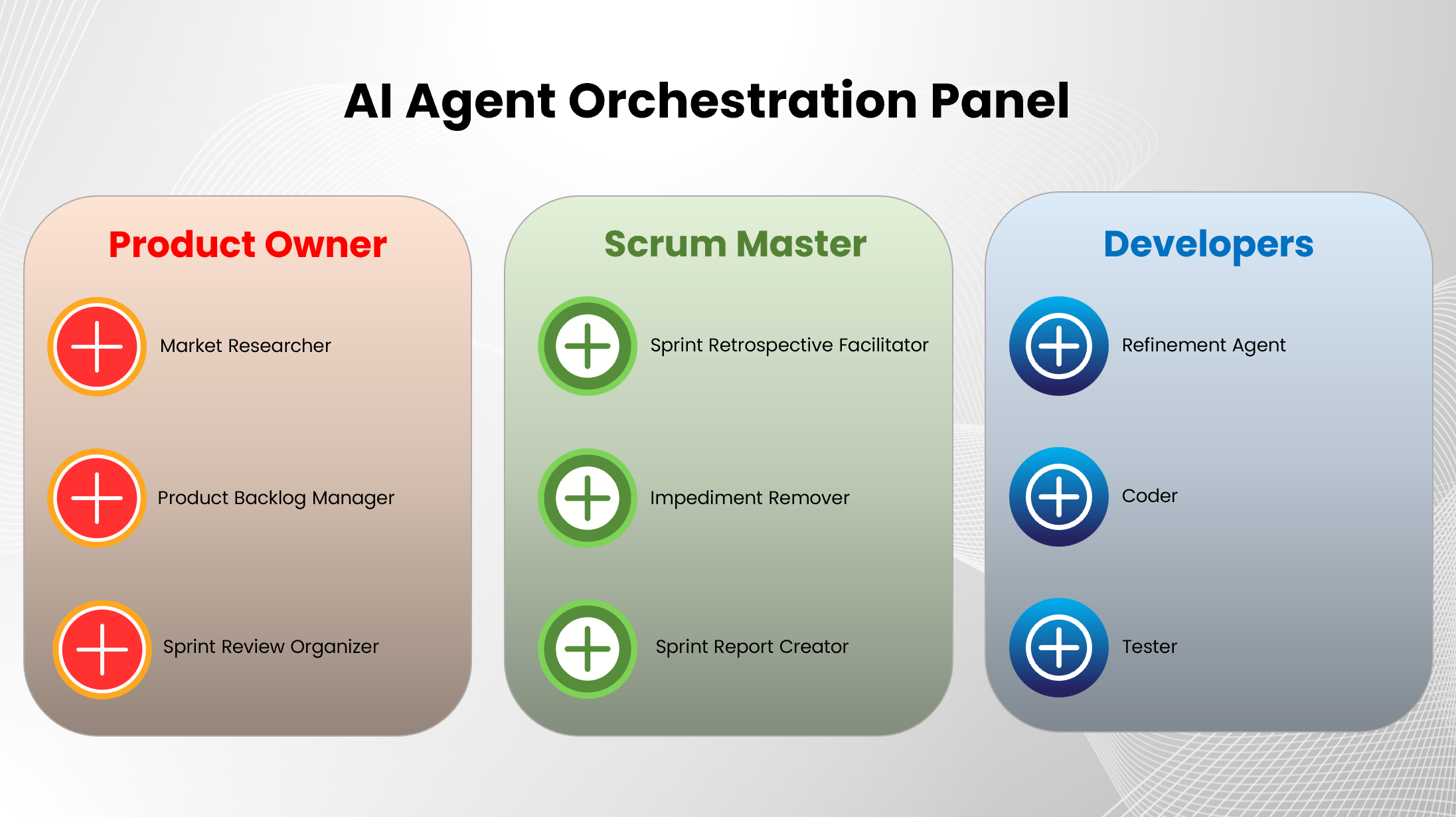In this video, I explain AI Agents in the simplest way possible.
What is an AI Agent?
Based on the definition, an AI Agent is an autonomous software system that uses artificial intelligence to perceive its environment, make decisions, and take action to achieve a specific goal without constant human intervention.
A Detective
An AI agent is like a detective. Tell the detective that a theft just happened, and you'll get the criminal behind bars at the end. The detective will do all the work for you: study the case, investigate, and arrest the thief.
If we wanted to visualize an AI Agent, we could say:
A human receiving inputs from the environment, processes them with his brain to perceive, plan, and make decisions. Finally, implement those decisions as actions with his hands.

A high-level flow of an AI Agent is something like this: It starts with inputs, processing the inputs with an AI model, usually a Large Language Model, and taking actions to create outputs.

Connect with its environment
AI Agents can connect and communicate with an endless number of tools. For example, in the input step, they can read emails, a database, a Google Sheet, messages in Slack, etc. Meanwhile, in the output step, they can connect with various tools and send a reply email, create an issue in Jira, add a card to Trello, assign a work item in Azure DevOps to someone, etc.
Now, let’s use a practical example to show how an AI Agent works.
Example: Mehdi Book Store
Imagine I have an online bookstore called Mehdi Book Store. For getting help and support, people can send me emails. This can be tracking a book delivery, refund, requesting a new feature, and so on.

I use my Outlook email to manage support tickets. In addition, the Product Backlog of my online book store has been created on Trello.
Now, I want to build an AI Agent to check incoming support emails for any requests for new features. Then add them as a new user story to the Product Backlog on Trello. I call this Agent: User Story Collector.

To build this AI Agent, we will use the Make.com service, which has a free plan as well. This video shows you the process on the screen.
You have seen how we can build an AI Agent and delegate repetitive tasks to it, and free up our time for strategic work.
You can think of various use cases to leverage AI Agents. A good way of thinking is to define use cases for various accountabilities in the Scrum Team.
Use Cases for the Scrum Accountabilities
For example, for a Product Owner, you can build AI Agents like:
- Market Researcher,
- Product Backlog Manager,
- Sprint Review Organizer, etc.
For a Scrum Master, it can be something like:
- Sprint Retrospective Facilitator,
- Impediment Remover,
- Sprint Report Creator, and so on.
And finally, for Developers, you can think of these examples:
- Refinement Agent,
- Coder,
- Tester, etc.
There are an endless number of AI Agents that you can build and leverage in your Scrum Team to migrate to a completely new level of productivity.
Let me give you a visualization of an AI Agent orchestration panel, a place where you have access to all your AI Agents, add new ones, operate with current ones, and monitor their performance. It’s amazing, isn’t it?!

I myself believe that with the advent of AI Agents, in the future, we will see a reduction in the size of Scrum Teams, which will cause big cost savings.
High demand for a new skillset
On the other hand, a new set of skills will be in high demand, like knowing how to orchestrate AI Agents. By orchestration, I mean designing, building, operating, and monitoring AI Agents to make sure that you have a gentle flow of value delivery.
Now, if you want to go further and learn how to effectively leverage AI in product management, you can invest in yourself by attending my upcoming Professional Scrum Product Owner – AI Essentials class.
It is a one-day live class full of practical exercises in a completely interactive style.

